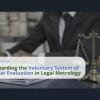Details
New or repaired?
Measuring instruments already in services are occasionally repaired or changed. If a measuring instrument which is already in service is changed in any way it has to be decided whether this change results in a new instrument which needs to be put new into use again or whether it is a repair of the old instrument.
Big differences between new or repaired
This decision has significant consequences as a new weighing instruments needs to be fully compliant with the new legislation. If the weighing instrument is considered to be repaired it will need to be re-verified according to national legislation. Particularly for companies that are active in several EU markets it is cumbersome to change the activities between each country based on different interpretations.
The European Commission has recognised, that barriers to trade are created where the conditions for putting into service, for installation and/or for use/operation are not harmonised. Those barriers are still present in the weighing instruments sector. Further harmonisation of non-harmonised aspects in this area of legal metrology is necessary. For manufacturers and end-users, it is of great importance to reduce barriers to trade and provide clarity.
Workflow needs to be followed to provide clarity
CECIP is supporting initiatives of the European Commission to call for more harmonisation. For clarity and in support of a harmonised application by all stakeholders, a general decision workflow is developed and can be found on the CECIP position paper.
CECIP is convinced that the right approach is to follow this workflow. As a consequence of this horizontal approach, the economic operator responsible for the intervention decides based on defined objective criteria, about the impact of an intervention and, depending on the result, follows applicable rules. CECIP calls on member states to follow this approach to decide if an action is considered a repair or the weighing instrument is considered a completely new instrument. This will give the necessary clarity to manufacturers, end-users and authorities.
The full position paper can be found here.




